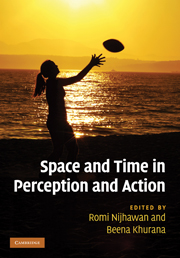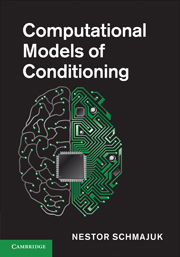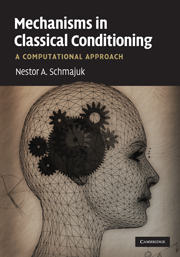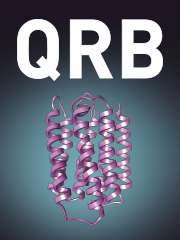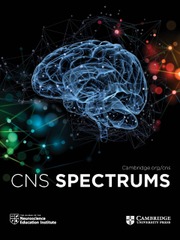Space and Time in Perception and Action
- Editors:
- Romi Nijhawan, University of Sussex
- Beena Khurana, University of Sussex
- Date Published: March 2010
- availability: Available
- format: Hardback
- isbn: 9780521863186
Hardback
Other available formats:
eBook
Looking for an inspection copy?
Please email [email protected] to enquire about an inspection copy of this book
-
What is the instantaneous position of a moving object from the point of view of the observer? How does a tennis player know when and where to place their racket in order to return a 120 mph serve? Does time stop sometimes and go faster at others? Space, time and motion have played a fundamental role in extending the foundations of 19th and 20th century physics. Key breakthroughs resulted from scientists who focused not just on measurements based on rulers and clocks, but also on the role of the observer. Research targeted on the observer's capabilities and limitations raises a promising new approach that is likely to forward our understanding of neuroscience and psychophysics. Space and Time in Perception and Action brings together theory and empirical findings from world-class experts and is written for advanced students and neuroscientists with a particular interest in the psychophysics of space, time and motion.
Read more- Unified treatment of space and time - encourages a more productive dialogue among experimental psychologists, neuroscientists and philosophers of mind
- Contains coverage of both cutting edge experiments and current theoretical treatments - a valuable reference to state of the art thinking in psychophysics
- Coverage of spatial and temporal phenomena by the most influential scientists in this field - lays down the foundation for a new zeitgeist in thinking about reality
Customer reviews
Not yet reviewed
Be the first to review
Review was not posted due to profanity
×Product details
- Date Published: March 2010
- format: Hardback
- isbn: 9780521863186
- length: 582 pages
- dimensions: 255 x 182 x 31 mm
- weight: 1.3kg
- contains: 140 b/w illus. 5 tables
- availability: Available
Table of Contents
List of contributors
1. Space and time: the fabric of thought and reality Beena Khurana and Romi Nijhawan
Part I. Time-space During Action: Perisaccadic Mislocalization and Reaching:
2. The internal eye position signal, psychophysics and neurobiology John Schlag and Madeleine Schlag-Rey
3. Factors influencing perisaccadic visual mislocalization Hitoshi Honda
4. Visual and non-visual factors in peri saccadic compression of space Markus Lappe, Lars Michels and Holger Awater
5. Keeping vision stable: rapid updating of spatiotopic receptive fields may cause relativistic-like effects M. Concetta Morrone, John Ross and David C. Burr
6. Combined influences of extraretinal signals, retinal signals, and visual induction on space perception and manual behavior in perisaccadic and steady viewing Leonard Matin and Wenxun Li
7. Space constancy: the rise and fall of perceptual compensation Bruce Bridgeman
8. Intercepting moving objects: do eye-movements matter? Eli Brenner and Jeroen B. J. Smeets
9. The utility of visual motion for goal directed reaching David Whitney, Ikuya Murakami and Hiroaki Gomi
Part II. Temporal Phenomena: Perception:
10. Saccadic chronostasis and the continuity of subjective temporal experience across eye movements Kielan Yarrow, Patrick Haggard and John C. Rothwell
11. Experiencing the future: the influence of self-initiation on temporal perception Timothy Verstynen, Michael Oliver and Richard B. Ivry
12. On the perceived interdependence of space and time: evidence for spatial priming in the temporal kappa effect Gisa Aschersleben and Jochen Müsseler
Part III. Temporal Phenomena: Binding and Asynchrony:
13. Dynamics of visual feature binding Colin W. G. Clifford
14. How does the timing of neural signals map onto the timing of perception? David M. Eagleman
15. Mechanisms of simultaneity constancy Laurence Harris, Vanessa Harrar, Philip Jaekl and Agnieszka Kopinska
16. Relative timing and perceptual asynchrony Derek H. Arnold
17. The time marker account of cross-channel temporal judgments Shin'ya Nishida and Alan Johnston
18. Simultaneity versus asynchrony of visual motion and luminance changes Martin J. M. Lankheet and Wim A. van de Grind
Part IV. Spatial Phenomena: Forward Shift Effects:
19. The Fröhlich effect: past and present Dirk Kerzel
20. Approaches to representational momentum: theories and models Timothy L. Hubbard
21. Conceptual influence on flash-lag effect and representational momentum Masayoshi Nagai, Mutsumi Suganuma, Romi Nijhawan, Jennifer J. Freyd, Geoffrey Miller and Katsumi Watanabe
22. Perceptual asynchronies and the dual-channel differential latency hypothesis H. Kafaligönül, S. S. Patel, H. Öğmen, H. E. Bedell and G. Purushothaman
23. Paying attention to the flash-lag effect Marcus V. C. Baldo and Stanley A. Klein
24. Illusions of time, space and motion: flash-lag meets chopsticks and reversed phi Stuart Anstis
25. Bridging the gap: a model of common neural mechanisms underlying the Fröhlich effect, the flash-lag effect, and the representational momentum effect Dirk Jancke and Wolfram Erlhagen
26. Perceiving-the-present and a unifying theory of illusions Mark A. Changizi, Andrew Hsieh, Romi Nijhawan, Ryoto Kanai and Shinsuke Shimojo
27. History and theory of flash-lag: past, present and future Gerrit Maus, Beena Khurana and Romi Nijhawan
Part V. Space-time and Awareness:
28. Object updating: a force for perceptual continuity and scene stability in human vision James T. Enns, Alejandro Lleras and Cathleen M. Moore
29. A motion illusion reveals the temporally discrete nature of visual awareness Rufin VanRullen, Leila Reddy and Christof Koch
30. Priming and retouch in flash-lag and other phenomena of the streaming perceptual input Talis Bachmann
Index.
Sorry, this resource is locked
Please register or sign in to request access. If you are having problems accessing these resources please email [email protected]
Register Sign in» Proceed
You are now leaving the Cambridge University Press website. Your eBook purchase and download will be completed by our partner www.ebooks.com. Please see the permission section of the www.ebooks.com catalogue page for details of the print & copy limits on our eBooks.
Continue ×Are you sure you want to delete your account?
This cannot be undone.
Thank you for your feedback which will help us improve our service.
If you requested a response, we will make sure to get back to you shortly.
×
